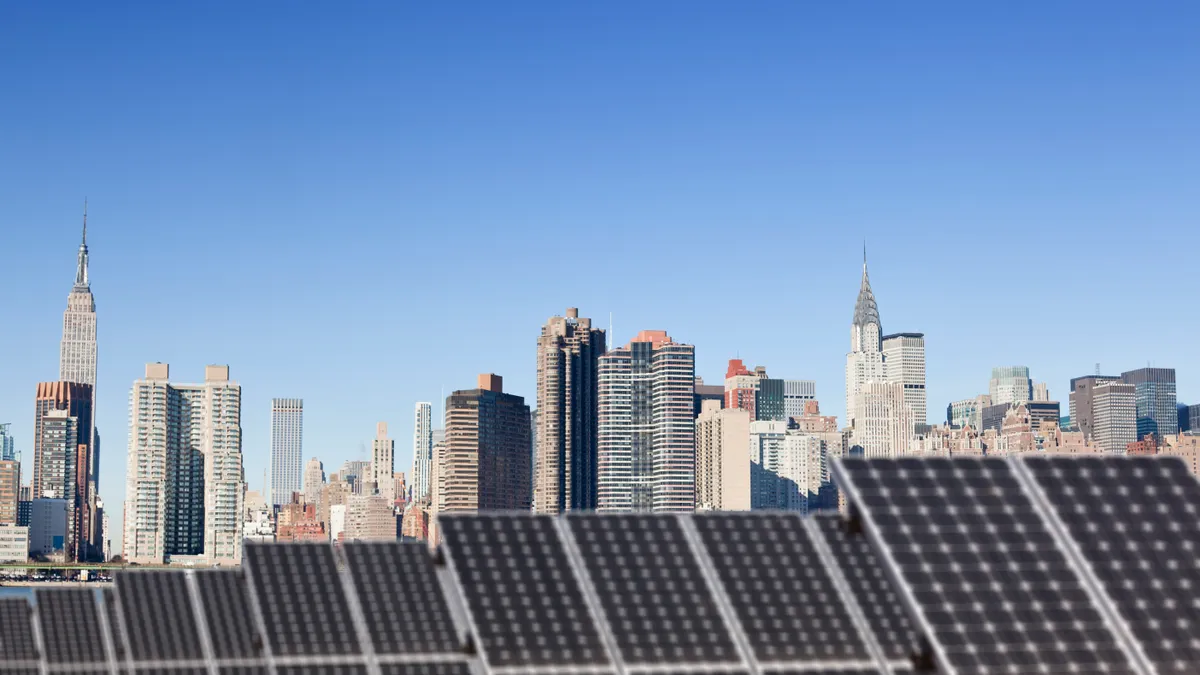Dive Brief:
- Potential new tariffs, stemming from a petition that seeks new antidumping and countervailing duties for some solar cell imports, could raise “U.S.-made module costs by 10 cents per watt and imported module costs by 15 cents/watt,” according to a report released Tuesday from Clean Energy Associates, commissioned by the American Council on Renewable Energy.
- “These higher prices implemented on top of other headwinds, including domestic factors and trade restrictions already in place and impacting the industry’s trajectory, could seriously hinder America’s progress on solar deployment,” ACORE said in a release.
- Tim Brightbill, lead attorney for the American Alliance for Solar Manufacturing Trade Committee, which submitted the petition, said, “The report itself shows that trade cases have never impacted solar demand in the past, and it indicates that [an] appropriate remedy would make U.S. manufacturing more competitive.”
Dive Insight:
CEA’s report found that AD/CVD tariffs would increase the all-in cost of U.S. module assembly from 22 cents per watt to 32 cents per watt, and Southeast Asia all-in module cost from 24 cents per watt to 40 cents per watt. But the report notes that there is “currently no crystalline silicon wafer or cell production in the U.S.” and alleges that increased import prices could lead to decreased financing for solar manufacturing.
Brightbill, who is a partner at law firm Wiley Rein, said, “Despite evidence of illegal trade practices, the organization behind this report is invested in maintaining the status quo.”
The industry alliance that submitted the petition – made up of First Solar, Hanwha Qcells, Convalt Energy, Meyer Burger, Mission Solar, REC Silicon and Swift Solar – alleges that some crystalline silicon solar cell imports from Cambodia, Malaysia, Thailand and Vietnam pose a threat to the domestic solar market.
The controversial petition split opinion in the solar industry immediately after its submission in April, with clean energy groups Advanced Energy United, ACORE, the Solar Energy Industries Association and the American Clean Power Association issuing a joint statement calling the petition a “potential threat” to the domestic solar supply chain.
“The U.S. will need to import up to 41 GW worth of cells and/or modules to meet projected U.S. installations until the Section 201’s phase-out in February 2026; cell imports during this time will add a cost burden to buyers,” CEA’s report said.
ACORE’s release says that the new analysis demonstrates that resulting harm to the solar market has already manifested in the form of “[spiking] prices” since the petition was filed with both the U.S. Department of Commerce and U.S. International Trade Commission on April 24. The ITC gave the petition a positive preliminary injury determination in June, allowing the case to move forward.
CEA’s analysis draws parallels between this case and a similar petition filed with the Department of Commerce in 2022 by California-based solar panel assembler Auxin Solar, which alleged that manufacturers of solar panels imported from the same four Southeast Asian countries had circumvented tariffs on Chinese-made components.
That case was also controversial for its potential impacts on the domestic solar industry, and CEA alleges that it led to “a substantial price increase from 35 [cents per watt] to 55 ¢/W that was only mitigated through Presidential action,” referring to a two-year pause issued by President Joe Biden on any new tariffs stemming from the investigation. The pause expired in June.
An April release from the industry alliance said the petitioners were filing because “companies found to be circumventing the tariffs are not expected to pay tariffs when the moratorium ends in June, because their Southeast Asia-based supply chains mean they are no longer in technical violation as outlined in the circumvention decision.”
Brightbill said in April that any enforcement stemming from the case was unlikely to harm U.S. solar supply, as “there are 30 GW of solar imports already in storage, almost two-and-a-half years’ worth of what is needed.”
During a Tuesday webinar hosted by ACORE, CEA Vice President and report co-author Dan Shreve said, “At the end last year and the beginning portion of 2024, there was a substantial amount of import capacity – more than what you would normally see,” but said he couldn’t be certain about that supply backlog’s future impact on pricing.
So far, Shreve said, “We believe that some of that price increase has been mitigated to some degree by what is a fairly substantial amount of inventory that has been made available here in the U.S.”















